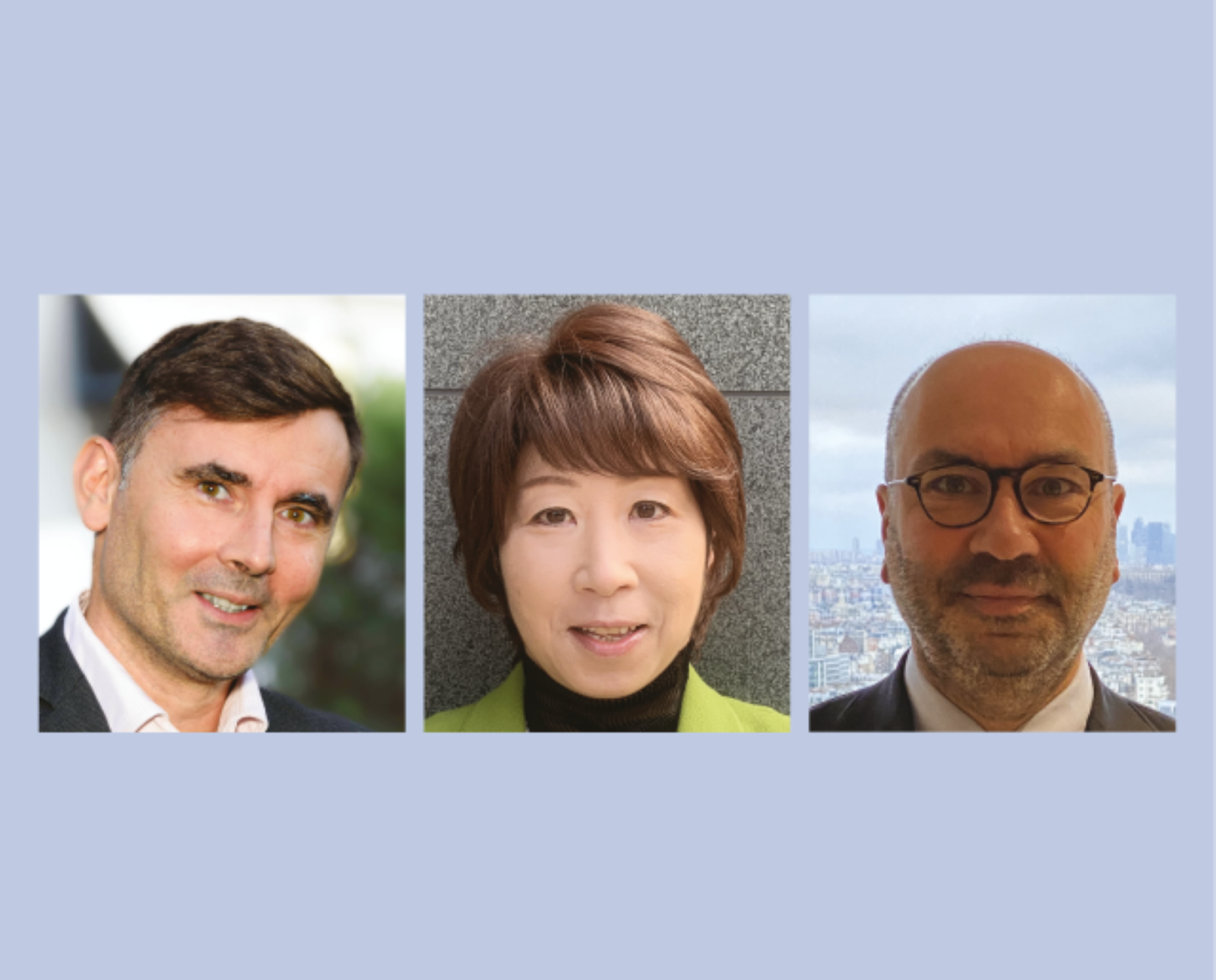In each monographic issue of Renewable Matter, the Think Tank section is an opportunity to hear directly from the most prominent figures in the fields that, from time to time, we cover. Scientists, consultants, economists, political figures, and intellectuals not only bring their expertise, culture, and experience but also peculiar and sometimes conflicting views of the world, which create a fruitful dialectic. Some people turn up their noses because we publish "too many" interviews. However, in our opinion, the plurality of voices is never "too much."
Thus, also for issue 49 focusing on Finance, we have assembled a virtual round table that starts in Europe, reaches Asia, and travels across the Pacific to land in the United States. Morgan Després, Sayuri Shirai, and Frederic Samama walked us through the mechanisms of global climate finance, the strategies for mobilising private capital and directing it to green investments, and how these systems work in various parts of the world.
Below is a summary of the topics we covered. You can read the full interviews in Renewable Matter #49.
Morgan Després, how to mobilise capital for climate action
Implementing the Paris Agreement, achieving the decarbonisation goals postulated by science, and acting effectively towards climate adaptation will require trillions of investment within the next decade. How can all this public and private capital be mobilised?
Emanuele Bompan spoke with Morgan Després, Executive Director for international climate finance, land use and net zero macroeconomy at the European Climate Foundation (ECF), which he joined in 2022, after 18 years working in international and European financial stability and regulation.
“At least 15 trillion dollars need to be mobilised globally by 2030,” he began. “A huge figure. But if compared to the amount of capital managed by sovereign wealth funds or asset managers, which is around 31 trillion dollars, it does not seem so impossible anymore. So why isn’t this money flowing into climate action funding? The numbers don’t add up.”
Sayuri Shirai, The Asian way to climate finance
Asia is undoubtedly the core region for global climate action. The continent is home to 4.7 billion people, 60% of the world’s population, and in 2023 its economies contributed two-thirds of global GDP growth. While the continent has not historically been a strong emitter, rapid development in recent decades has grown its footprint considerably: today, about half of global greenhouse gas emissions are generated by Asian economies.
At the same time, the region is one of the hardest hit by the effects of the climate crisis and needs vast investments in adaptation and mitigation projects. Such investments are currently still far from reaching the necessary critical mass. According to IMF calculations, Asian climate finance today is worth just over 300 billion dollars, but it would need at least another 800 billion dollars a year.
The Asian Development Bank (ADB), the continent’s multilateral development bank, is working to bridge this gap by implementing specific (and quite different from European) strategies for a fast-growing type of economy that is still very fossil fuel-based and has a major transparency problem. The formula comprises three factors: blended finance, corporate disclosure, and transition finance. Giorgia Marino talked about this with Japanese economist Sayuri Shirai, sustainable policy advisor at the ADB Institute, professor at Keio University, and former policy board member of the Bank of Japan.
Frederic Samama, how to decarbonise portfolios by listening to science
In 2018, governments committed to a net-zero path represented 10% of the total; nowadays they account for 70%. Climate finance is constantly and rapidly evolving, but new strategies are always needed to address the challenges of the sector on a global level. 2024 will be a crucial year, starting with COP29, to restore the financial world’s confidence in green investment. If there is one person who is always one step ahead of everybody when it comes to climate and finance, it is Frederic Samama, Head of Strategic Development at S&P Global Sustainable1 and one of the most sophisticated minds in the financial world.
Samama is a real long-time insider: he started his career at JP Morgan in Paris, oversaw Corporate Equity Derivatives at Crédit Agricole Corporate Investment Banking in Paris and New York, built Amundi’s green finance franchise by pioneering the first mainstream equity low-carbon indexes, and launched the largest green bond fund of its time to finance green infrastructures in emerging markets. Emanuele Bompan sat down with him in his Parisian office to discuss the challenges facing the financial sector as it is called upon to decarbonise the global market.
DOWNLOAD AND READ THE NEW ISSUE OF RENEWABLE MATTER: FINANCE
This article is also available in Italian / Questo articolo è disponibile anche in italiano
Image: Morgan Després, Sayuri Shirai, Frederic Samama



